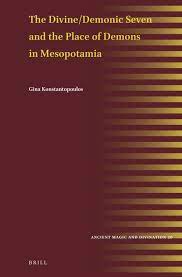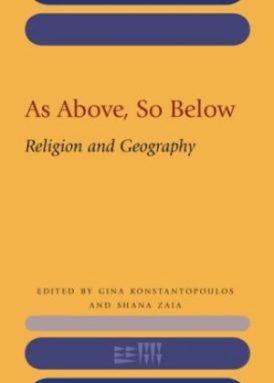Gina Konstantopoulos

Associate Professor
Fields of Interest: Assyriology and Cuneiform Studies, Mesopotamian Religion, Magic, and Literature, Demons and Monsters
Education
- PhD, Near Eastern Studies, University of Michigan, 2015
- MA, Near Eastern Studies, University of Michigan, 2010
- BA, Asian Studies, Mount Holyoke College, 2007
Research
Gina Konstantopoulos is an Associate Professor in Assyriology and Cuneiform Studies in the Department of Near Eastern Languages and Cultures at UCLA. Her research centers on religion, magic, and literature in Mesopotamia, with a particular focus on the role of demons and monsters in Sumerian and Akkadian texts. Her current research is on the creation of distant and imagined lands and notions of space and place in the ancient Near East, particularly the intersection of distant space and empire in the first millennium BCE. Konstantopoulos has authored articles on demons and monsters in Mesopotamia, translations of Sumerian and Akkadian texts, and the reception of Mesopotamia in later pre-modern and modern contexts. She has previously held postdoctoral research positions at the University of Tsukuba, University of Helsinki, and Institute for the Study of the Ancient World, New York University. She earned her PhD in Assyriology from the University of Michigan in 2015, with fellowships at the Metropolitan Museum of Art (2014-2015) and the University of Würzburg (2012-2013).
Books
Selected Publications
- “The Many Lives of Enheduana: Identity, Authorship, and the ‘World’s First Poet.’” Pp. 55-74 in Presentation and Perception of Powerful Women in the Ancient World, eds. S. Fink and K. Droß-Krüpe. Münster: Zaphon, 2021.
- “Gods in the Margins: Religion, Kingship, and the Fictionalized Frontier.” Pp. 3-27 in As Above, So Below: Religion and Geography, eds. Gina Konstantopoulos and Shana Zaia. Winona Lake: Eisenbrauns, 2021.
- “Migrating Demons, Liminal Deities, and Assyria’s Western Campaigns.” Advances in Ancient, Biblical, and Near Eastern Research 1/1 (2021): 129-48.
- “The Bitter Sea and the Waters of Death: the Sea as a Conceptual Border in Mesopotamia.” Journal of Ancient Civilizations 35/2 (2020): 171-98.
- “Demons and Exorcism in Mesopotamia.” Religion Compass 14/10 (2020): 1-14.
- “My Men Have Become Women, and My Women Men: Gender, Identity, and Cursing in Mesopotamia.” Welt des Orients 50/2 (2020): 358-75.
- “Looking for Glinda: Wise Women and Benevolent Magic in Old Babylonian Literary Texts.” In Cult Practices in Ancient Literatures: Egyptian, Near Eastern and Graeco-Roman Narratives in a Cross-Cultural Perspective, eds. F. Naether. ISAW Papers 18, 2020.
- “Deities, Demons, and Monsters in Mesopotamia.” In Ancient Mesopotamia Speaks: Highlights of the Yale Babylonian Collection, eds. A. W. Lassen, K. Wagensonner, and E. Frahm. New Haven: Yale University Press, 2019: 44-55.
- “Inscribed Kassite Cylinder Seals in the Metropolitan Museum.” Metropolitan Museum Journal 53 (2018): 96-113.
- “Pigs and Plaques: Considering Rm. 714 in Light of Comparative Artistic and Textual Sources.” Iraq 80 (2018): 151-165.
- Hic Sunt Dracones: Creating, Defining, and Abstracting Place in the Ancient World [Special Issue] Journal of Ancient Near Eastern History 4.1–4.2 (2017).
- “The Disciplines of Geography: Constructing Space in the Ancient World.” Journal of Ancient Near Eastern History 4 (2017): 1-18.
- “Through the Guts of a Beggar: Power, Authority, and the King in Old Babylonian Proverbs.” KASKAL 14 (2017): 153-168.
- “Shifting Alignments: the Dichotomy of Benevolent and Malevolent Demons in Mesopotamia.” Pp. 19-38 in Demons and Illness: Theory and Practice from Antiquity to the Early Modern Period, eds. S. Bhayro and C. Rider. Leiden: Brill, 2017.



